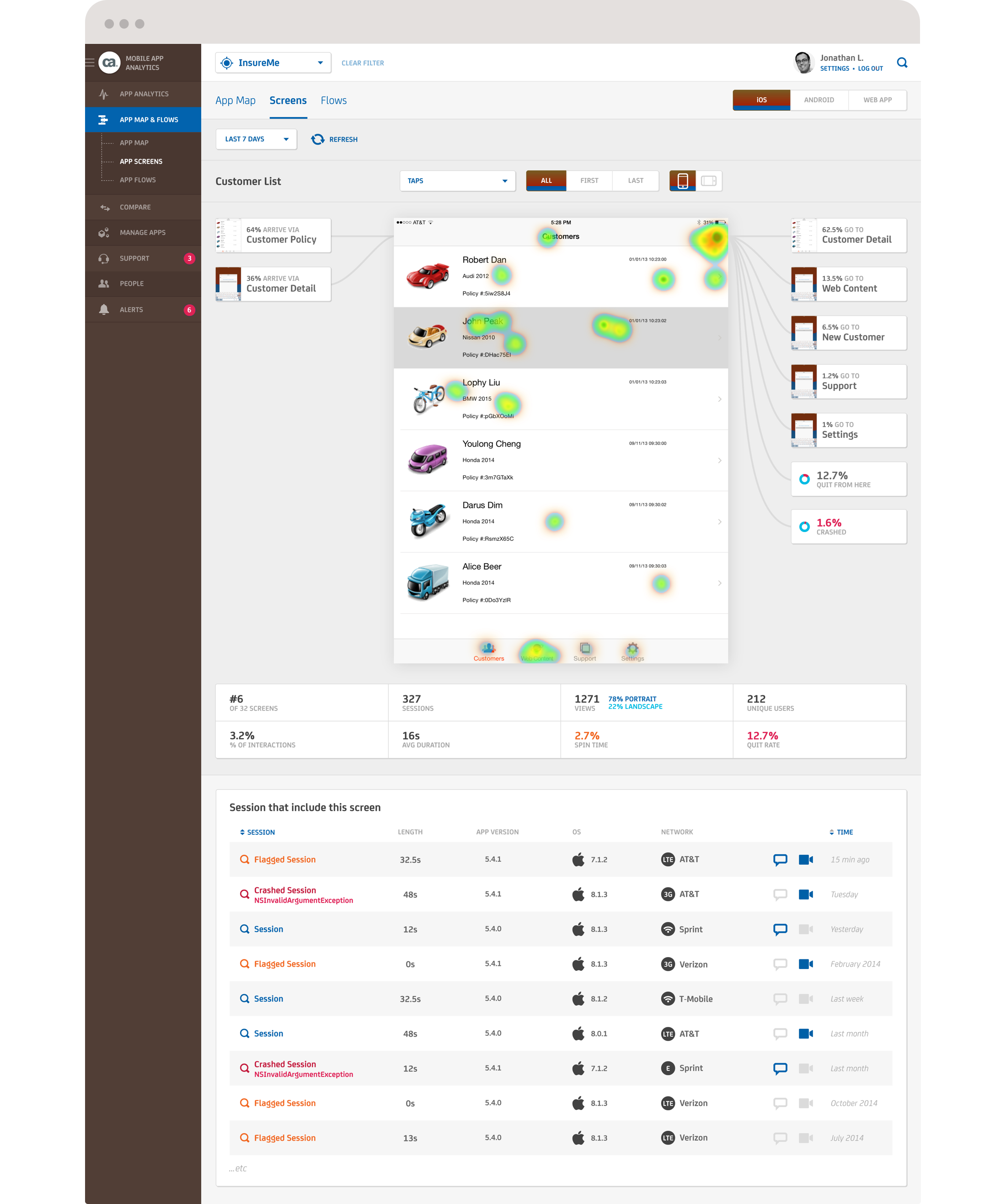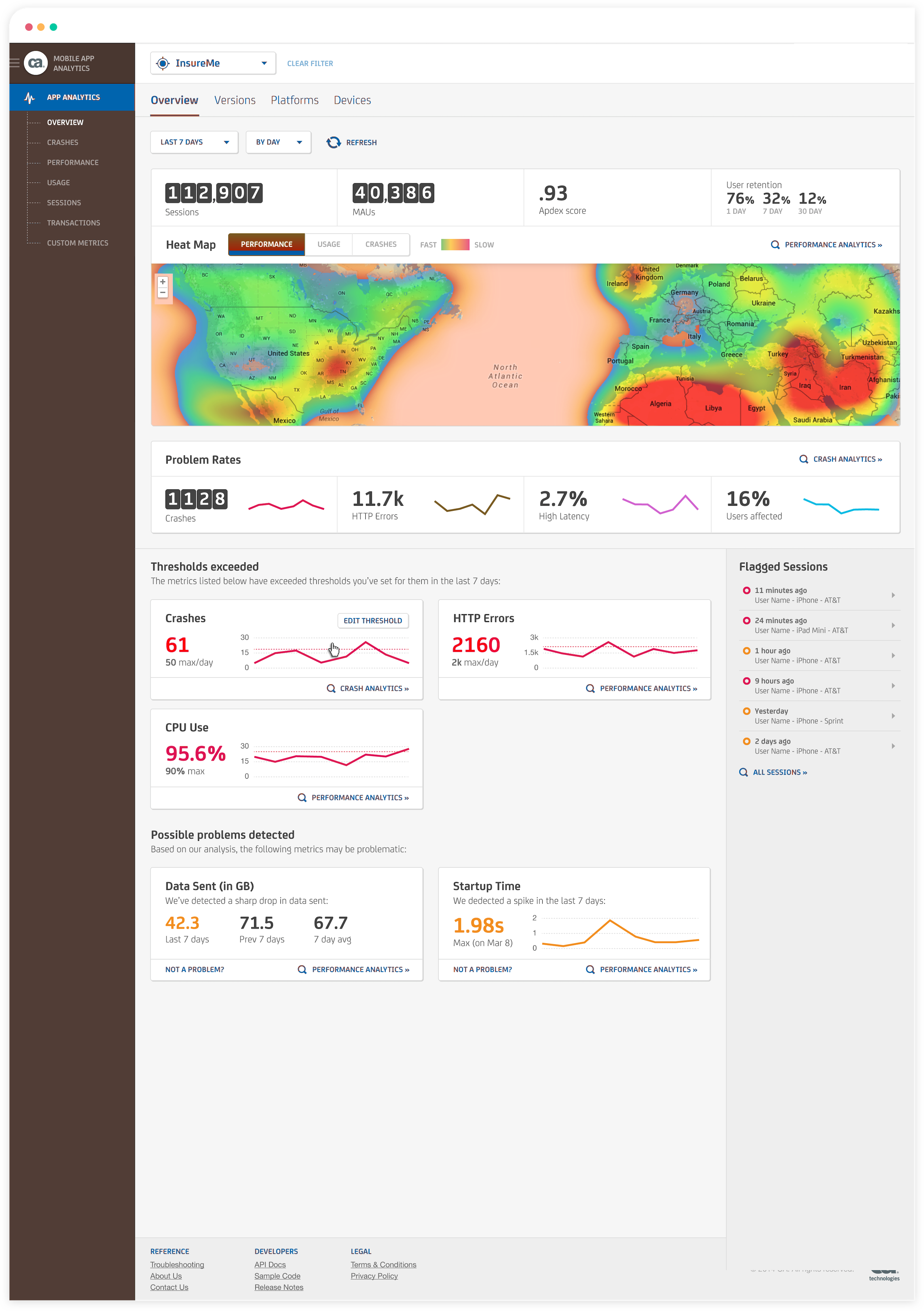
 Mobile App Analytics
Mobile App Analytics
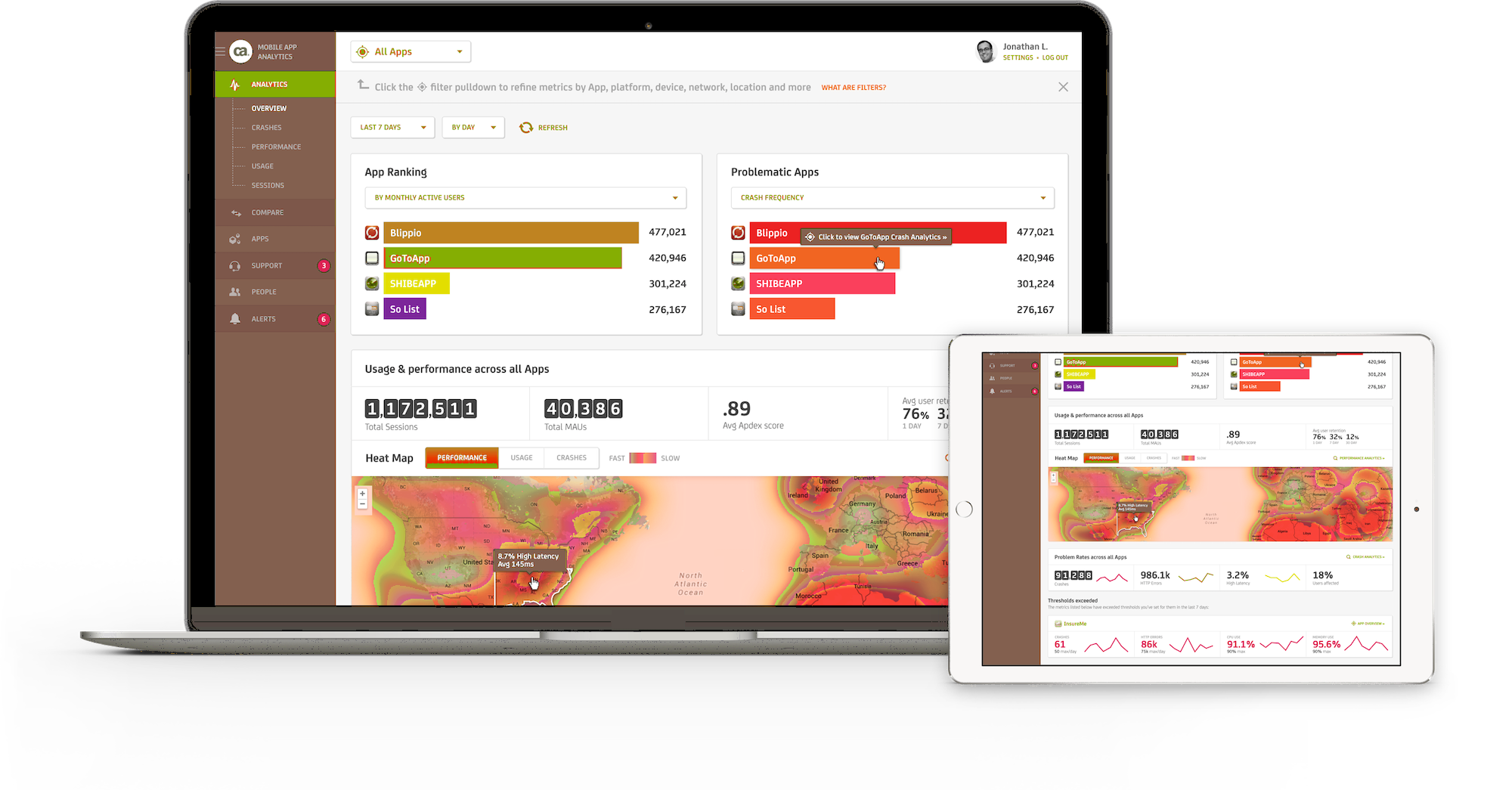
Overview of the project
CA Technologies enlisted my help in developing their Mobile App Analytics (MAA) solution, an enterprise-grade mobile analytics platform intended for clients such as Verizon Wireless. The MAA project presented distinct specifications that required the ability to flexibly handle an unlimited number of apps and versions, while concurrently offering both global and app-centric performance tracking. Despite operating under a tight deadline, our objective was to construct a demonstrative prototype.
With the looming deadline of Mobile World Congress 2017 only a quarter away, I teamed up with representatives from CA to push the project forward. Despite the pressing timeline, I made substantial strides, leading to remarkable showcases of our prototype. This instigated a year and a half-long partnership where I guided numerous product launches and established a robust design base for its future development.
Pioneered impactful collaboration.
An essential element of the undertaking was partnering with a proactive, knowledgeable stakeholder. In aligning with CA and encouraging consistent interactive feedback, I could grasp the preliminary ideas and focus on conceptualizing and implementing the required solution.


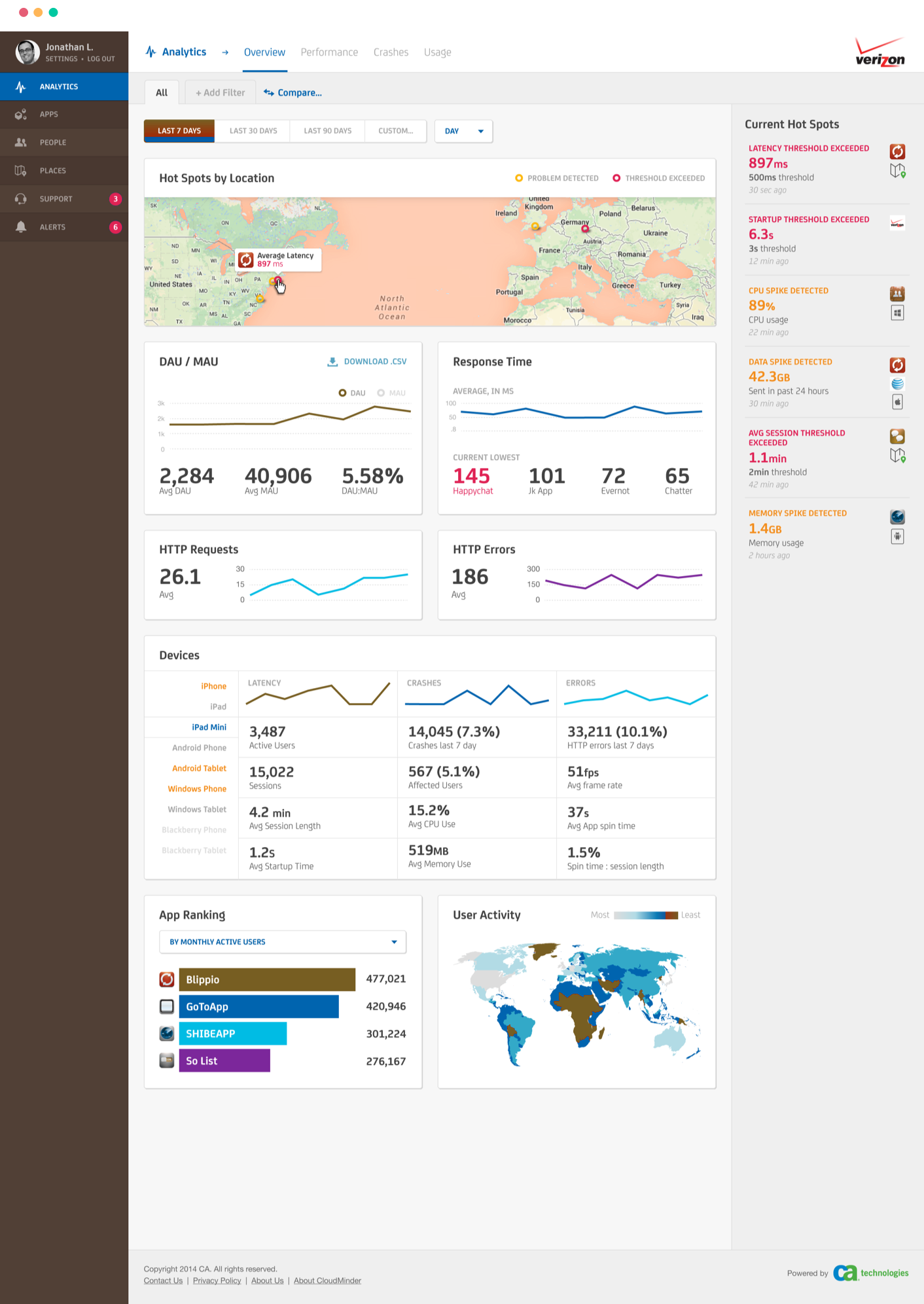


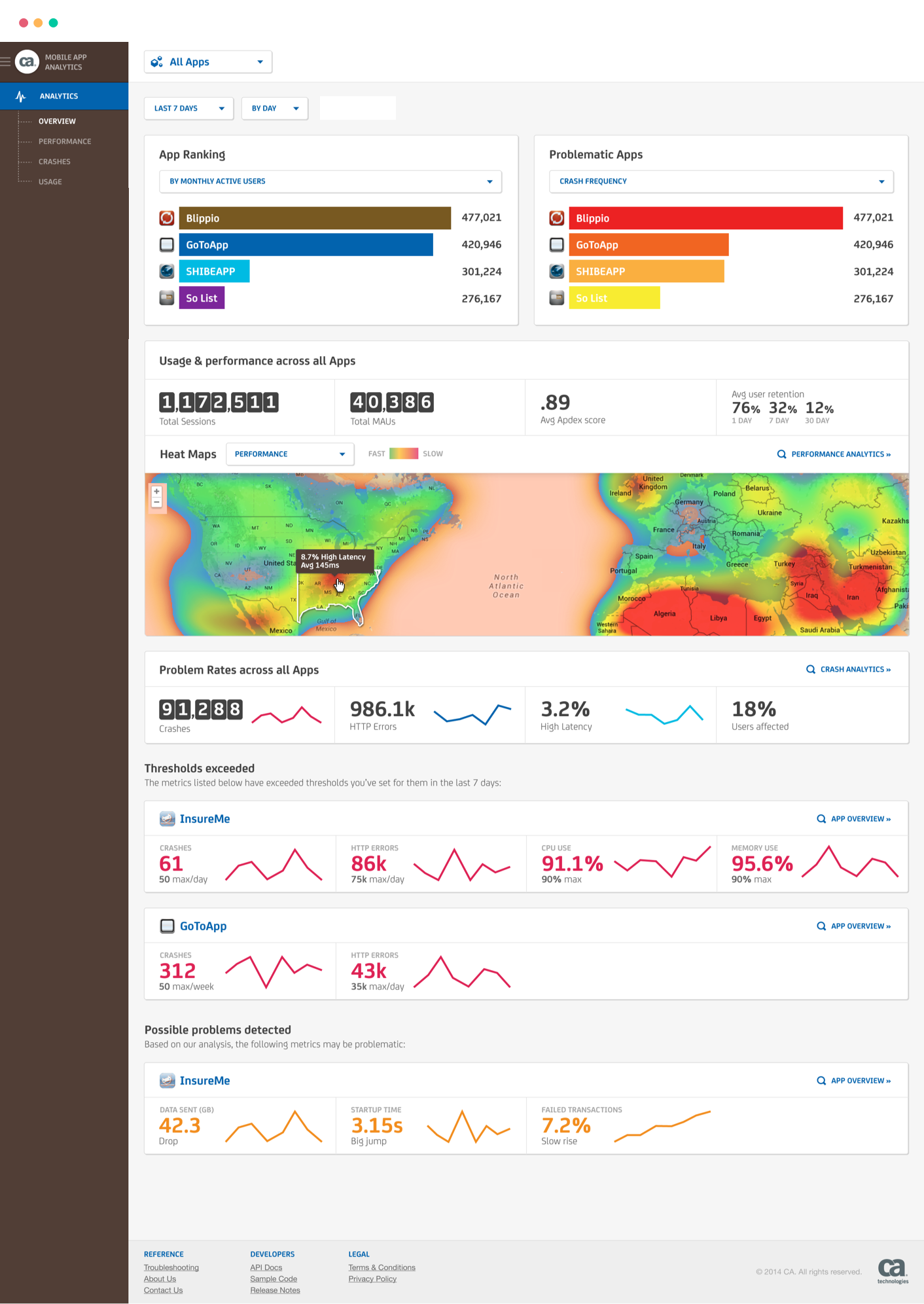
Continuous Feature Evolution
Dissimilar to the majority of app analytics tools available, MAA empowers users to manage and monitor numerous mobile apps rather than a single one. The need to convey application context and enable analysis across several apps posed unique user interface challenges. I suggested a custom filter creation tool that gave users the liberty to define not only the app but also a range of other factors such as platforms, devices, network providers, and geographical areas.
Revision 1
Primary Blueprint
With the escalating number and intricacy of filters, I reengineered the filter panel to handle an indefinite amount of filters, each potentially having multiple criteria instead of a simple, singular selection of alternatives.
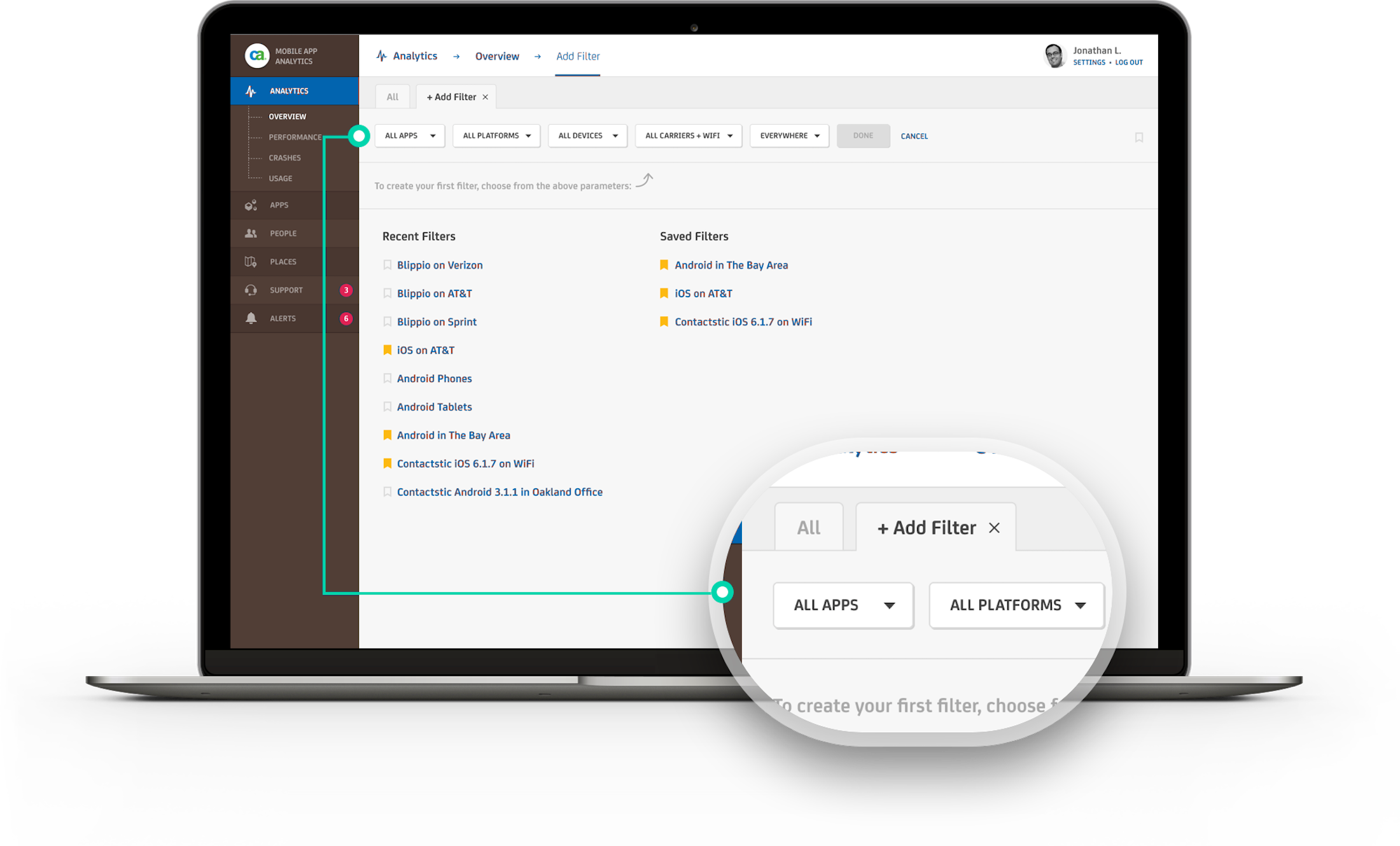
Revision 2
Feedback Incorporated
By shifting filters to a higher hierarchy and converting the filter selection into a supplementary panel, I swiftly improved user understanding of the filter's purpose and application. To maintain the capacity for rapid filter alternation, I introduced the notions of Stored and Latest filters.
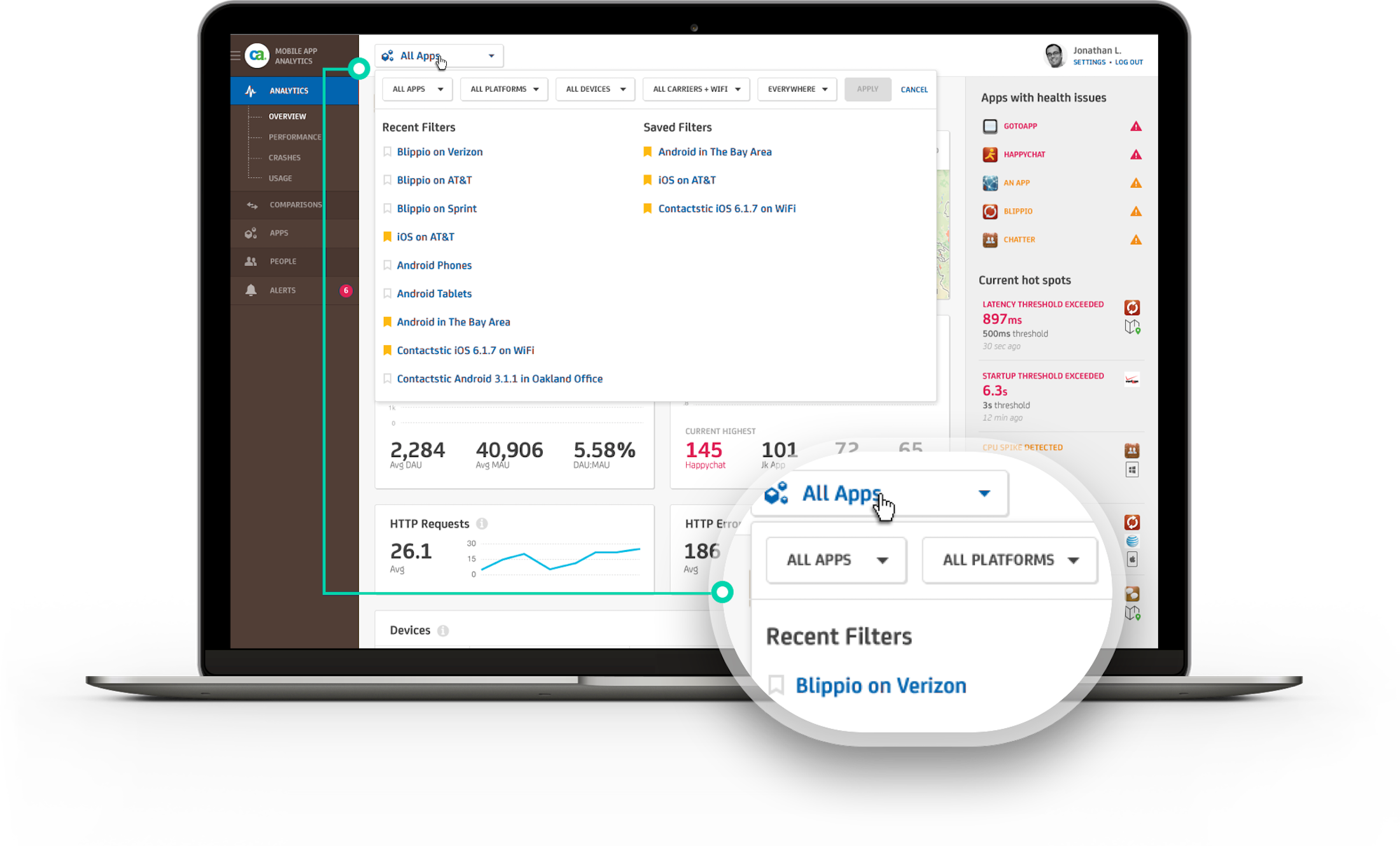
Revision 3
Final product
As filters grew in both quantity and complexity, I revamped the filter panel to accommodate an unlimited number of filters, each capable of having multivariate definitions instead of a basic, singular list of options.
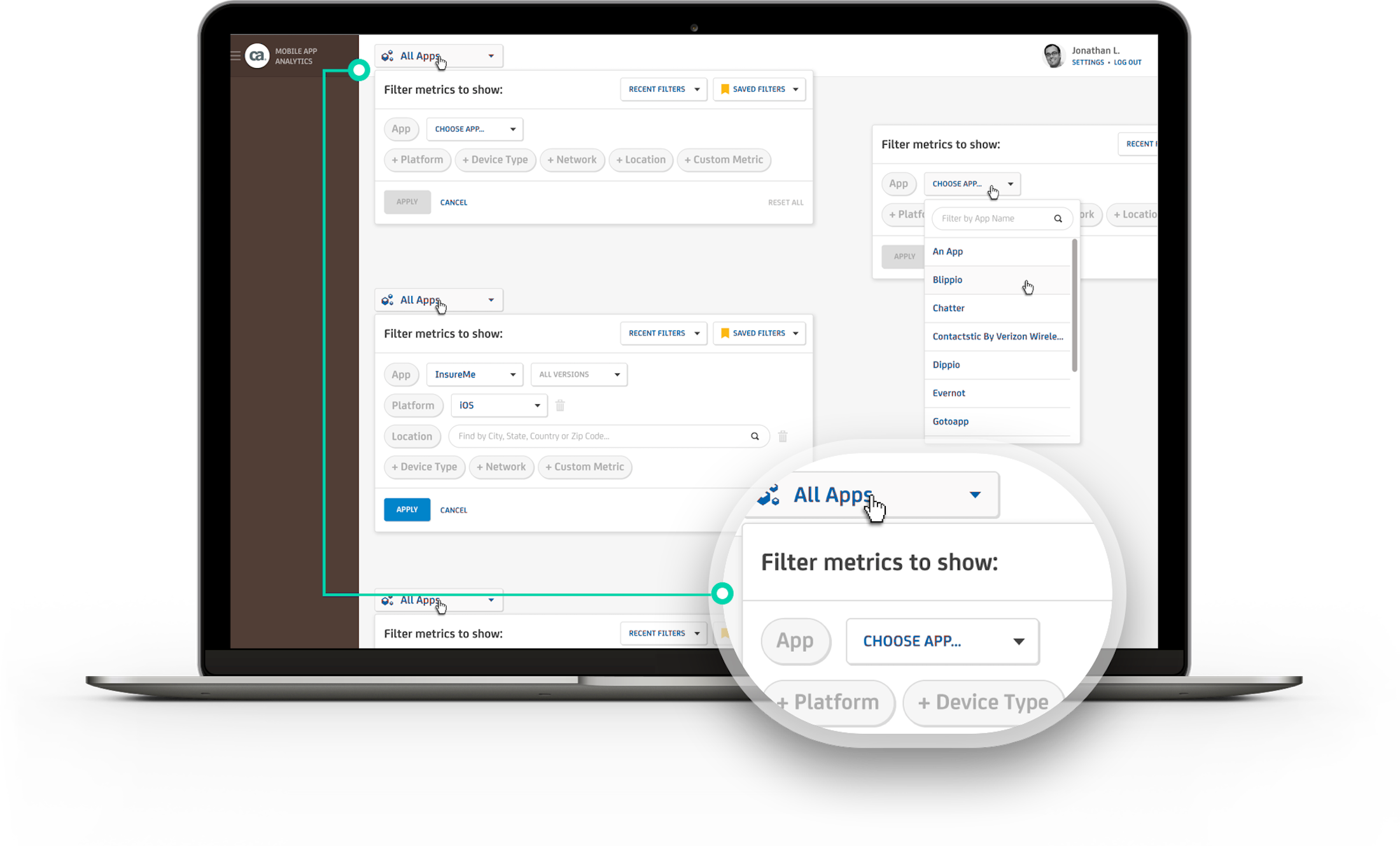
Advanced User Experience
In contrast to the majority of app analytics resources available, MAA provides users the capability to possess and monitor several mobile apps rather than merely one. Imparting application context and facilitating analysis across numerous applications were distinct user interface demands. I recommended a filter creation utility that let users define not only the app but also a variety of parameters encompassing platforms, devices, service providers, and geographical regions.
